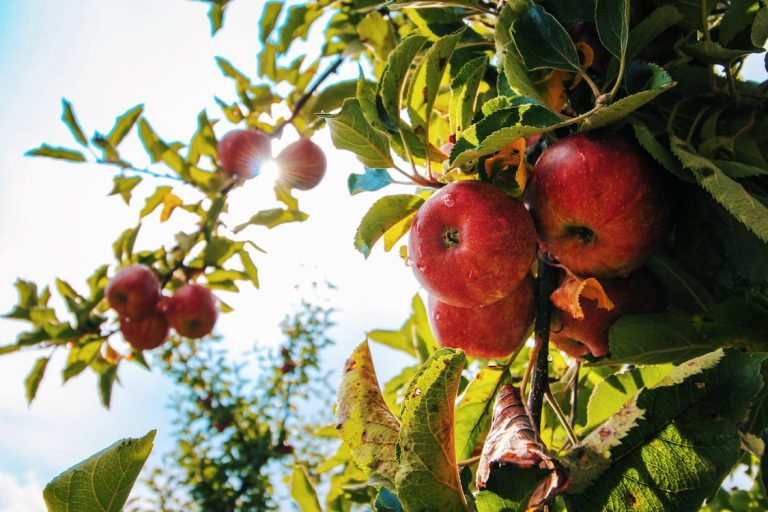As a gardening enthusiast, there’s nothing quite like the satisfaction that comes from growing your own fruit. Planting and nurturing fruit trees not only adds beauty to your landscape but also provides you with a bountiful harvest for years to come.
The challenge is discovering which fruit trees will thrive in your region’s climate. In this comprehensive guide, we will explore the best fruit trees for every primary U.S climate region – the North, East, South, and West – ensuring your garden will bear the sweetest fruits possible.
Fruits in the Frost: Northern Climate Trees
The Northern U.S. is characterized by cold winters and, in some areas, cooler summers. As a result, gardeners in this region should select cold-hardy fruit trees able to withstand freezing temperatures. Here are some prime choices:
1. Apple (Malus domestica): Apple trees come in numerous hardy varieties such as ‘Honeycrisp,’ ‘McIntosh,’ and ‘Haralson’ that can withstand temperatures as low as -30°F. Apple trees need around 700-1000 hours of winter chilling, making them well-suited for Northern climates.
2. Cherry (Prunus spp.): Tart or sour cherry varieties, like ‘Montmorency,’ thrive in colder climates, withstanding winter temperatures as low as -40°F. Sweet cherry trees are less cold-hardy, but the ‘North Star’ and ‘Bali’ varieties can still withstand temperatures down to -20°F.
3. Pear (Pyrus communis): European pear trees like ‘Bartlett’ and ‘Bosc’ can tolerate cold conditions, with some varieties able to withstand temperatures down to -25°F. The hardiest choices include ‘Luscious’ and ‘Ure’.
Eastern Flavor: Fruit Trees for the East Coast
The East Coast, with its varying climate and landscape, features a diverse selection of fruit trees that will flourish:
1. Blueberry (Vaccinium spp.): Blueberry bushes, such as the ‘Highbush’ and ‘Lowbush’ varieties, thrive in acidic soils often found in the East Coast. Moreover, these can withstand winter temperatures down to -25°F, making them a great choice for cold regions.
2. Peach (Prunus persica): Peaches are more common in warmer Southern states, but specific cold-hardy varieties like ‘Reliance’ and ‘Elberta’ can survive winters in the Northeast. Ensure proper winter care to maintain a healthy peach tree in cooler regions.
3. Fig (Ficus carica): Hardy fig varieties that tolerate temperatures as low as 10°F are suitable for the East Coast. The ‘Hardy Chicago’ and ‘Celeste’ are popular types due to their high resilience and productivity.
Savor the Southern Sun: Trees for Southern Climates
The Southern U.S. hosts hot summers and mild winters, which makes it ideal for cultivating subtropical fruit trees:
1. Citrus (Citrus spp.): The South is renowned for its juicy citrus fruits, such as oranges, lemons, and grapefruits. Some favorite cold-hardy citrus options are the ‘Meyer Improved’ lemon and the ‘Owari’ Satsuma tangerine, which can withstand temperatures as low as 15°F.
2. Persimmon (Diospyros spp.): The ‘Oriental’ variety is popular in the Southeast, and the native American persimmon grows well in Southern and Southeastern U.S. These trees can endure temperatures down to 0°F.
3. Pecan (Carya illinoinensis): Pecan trees can tolerate summer heat and require around 200-650 chilling hours during the winter. As native trees of the South, they’ll offer nutritious nuts that double as a delicious treat.
Western Wonders: Fruit Trees for the West Coast
Mild and Mediterranean-like climates, such as those found in California and Oregon, allow for a unique selection of fruit trees:
1. Olive (Olea europaea): The Western U.S. provides optimum growing conditions for olive trees, making them a popular tree for this region. Select varieties like ‘Arbequina,’ ‘Mission,’ and ‘Manzanillo’ for optimal growth.
2. Avocado (Persea americana): In frost-free areas of the West Coast, avocados flourish. The ‘Hass’ and ‘Fuerte’ varieties are popular choices due to their high productivity and rich flavor.
3. Pomegranate (Punica granatum): Pomegranates thrive in semi-arid climates with cool winters and hot summers, such as those found on the West Coast. Varieties like ‘Wonderful’ and ‘Angel Red’ are great options for this region.
Ensuring Tree-mendous Success
Every climate offers a unique selection of fruit trees for your garden to make it flourish. These fruit trees will not only provide you with delicious harvests but also enhance your landscape’s beauty. Before planting, ensure that the chosen fruit trees are compatible with your region’s climate, soil type, and sunlight availability.
This guarantees successful growth and a flourishing garden, with nature’s bounty ripe for the picking.

